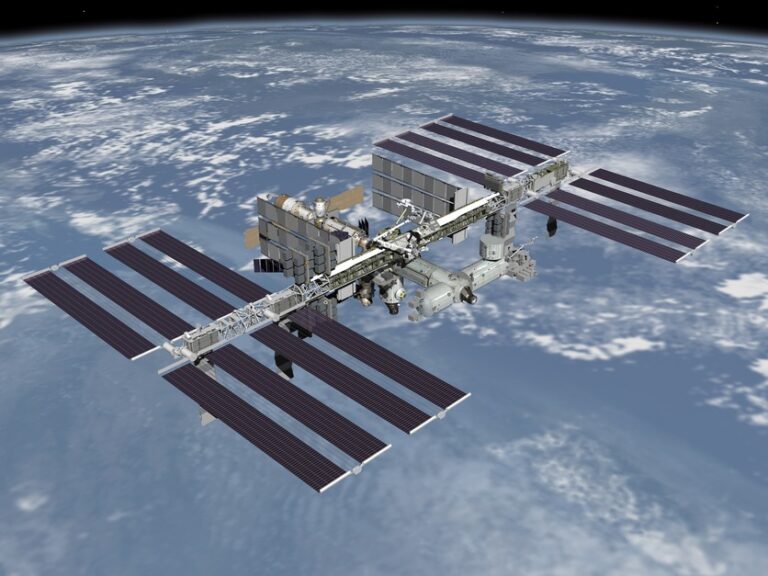Artificial Satellite
What is Artificial Satellite?
An Artificial Satellite is a human-made object that is deliberately positioned in space around a divine body, normally a planet, moon, or star. The main role of counterfeit satellites is to serve different capabilities, including correspondence, logical exploration, route, weather conditions checking, Earth perception, and military reconnaissance, among others.
Counterfeit satellites are sent off into space utilizing rockets and are intended to stay in the circle for broadened periods, going from a couple of months to quite a long while, contingent upon their central goal and plan. They circle the Earth or other divine bodies because of the harmony between their forward speed, which holds them back from falling back to the surface, and the gravitational power that pulls them internally.
Satellites can be classified into different kinds in view of their expected reason and the elevation of their circles:
Table of Contents
1. Low Earth Orbit (LEO) Satellites:
These satellites circle generally near Earth, normally at elevations of a couple of hundred kilometers to around 2,000 kilometers. They are regularly utilized for Earth perception, correspondence, and logical exploration.
2. Medium Earth Orbit (MEO) Satellites:
These satellites are set at higher elevations than LEO satellites, normally going from 2,000 to 35,786 kilometers. MEO satellites are frequently utilized for route frameworks like GPS (Worldwide Situating Framework).
3. Geostationary Orbit (GEO) Satellites:
Satellites in geostationary circles are set at a height of around 35,786 kilometers straight over the equator. They have all the earmarks of being fixed compared with a particular point on Earth’s surface, which makes them ideal for correspondence and weather conditions checking as they cover a similar region reliably.
4. Polar Orbit Satellites:
These satellites circle the Earth from one post to another, giving worldwide inclusion and significant information for Earth perception and logical exploration.
5. Sun-Synchronous Orbit Satellites:
These satellites circle the Earth so that they ignore any given area at a similar neighborhood sunlight-based time every day. This circle is frequently utilized for Earth perception and ecological checking.
Artificial Satellite have essentially affected different parts of current life, including media communications, weather conditions gauging, route, catastrophe the board, and logical exploration. They give important information and administrations that upgrade how we might interpret the Earth and space while empowering fundamental advancements and applications.
What is a natural satellite?
A characteristic satellite, frequently basically alluded to as a “moon,” is a heavenly body that circles a planet, bantam planet, or other bigger item in space. Regular satellites are not human-made; they are shaped through regular cycles and have been available in our nearby planet group since its development. The most notable illustration of a characteristic satellite is Earth’s Moon, which circles the Earth.
Normal satellites come in different sizes and can have assorted attributes. They can be rough, frigid, or a mix of both. A few normal satellites are tiny, while others are equivalent in size to planets. These moons are held in a circle by the gravitational fascination between the bigger body (the planet or planet-like article) and the actual moon. Order satellite here… https://www.starlink.com
Here are a few examples of natural satellites in our solar system:
1. Earth’s Moon:
Earth’s Moon is one of the biggest and most notable regular satellites. It assumes a critical part in Earth’s tides and has been concentrated on widely by both mechanical rocket and human missions.
2. Ganymede, Callisto, Io, and Europa (Jupiter’s Moons):
These are probably the biggest normal satellites in our planetary group and are known as the Galilean moons, named after Galileo Galilei, who found them utilizing a telescope. They circle the planet Jupiter and have assorted geographies, including ice-covered surfaces and dynamic volcanoes.
3. Titan (Saturn’s Moon):
Titan is the biggest moon of Saturn and is extraordinary because of its thick air, which contains methane and ethane. It has a scene with lakes and streams of fluid hydrocarbons.
4. Enceladus (Saturn’s Moon):
Enceladus is known for dynamic fountains that transmit crests of water fume and ice particles from its surface. These crests give bits of knowledge into the moon’s subsurface sea.
5. Phobos and Deimos (Mars’ Moons):
Mars has two little unpredictably molded moons, Phobos and Deimos. They have caught the interest of researchers and space fans the same because of their secretive starting points and uncommon qualities.
Normal satellites assume an essential part in the investigation of planetary frameworks, as they give bits of knowledge into the development and advancement of their host planets and the general conditions. They additionally have expected ramifications for future space investigation and colonization endeavors, as they could act as asset-rich objections for logical examination and human residence.
Researchers successfully train a machine learning model in outer space for the first time
Source- University of Oxford
Summary-
Scientists have trained a machine learning model in outer space, on board a satellite. This achievement could revolutionize the capabilities of remote-sensing satellites by enabling real-time monitoring and decision-making for a range of applications.
Learn more about Recent Technology News Here …
